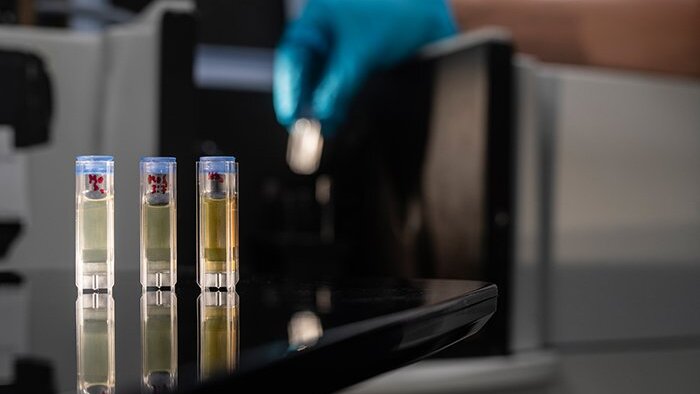
The discovery of graphene led to the discovery of a plethora of materials, which naturally form two-dimensional layers of atomic or molecular thickness. Among these are conductive, dielectric and semiconductive materials, which all have radically altered properties, when compared to their bulk counterparts.
Transition-Metal-Dichalcogenides (TMCs), a subclass of semiconducting 2D-materials, are possibly among the most intriguing materials for photonics. They are direct semiconductors with band-gaps in the visible spectral range. Electronic excitations are two-dimensionally confined and experience only weak dielectric shielding. In combination with the highly asymmetric crystal, this gives them unusually strong light-matter interaction and a rich set of dynamic effects. TMCs exhibit strong photoluminescne, large refractive indices, optical nonlinearities, spin-orbit coupling and highly stable excitons. This makes TMCs highly interesting for experiments in fundamental physics, such as the investigation of strong coupling, polaritonic condensation or valley splitting but also highly appealing for applications in surface functionalization, microscopy and quantum imaging.
Our research is focussed on the integration of TMCs with resonant structures: both in the context of nanophotonics, where we investigate the interaction of plasmonic and dielectric nano resonators with this novel nano-material, as well as in the context of microresonators, where we investigate the interaction of two-dimensional electronic excitations with optical coatings, e.g. highly resonant DBR-stacks. Our research aims to utilize structures made from tailored classic (nano-)photonic systems, which are functionalized by 2D-materials. It is driven by the potential of these hybrid systems for applications in microscopy, laser physics and quantum photonics. There, novel nanoscopic 2D-enabled light-sources may be used to complement fluorescent molecules, create highly efficient light sources and exotic quantum states of light.
This research topic is jointly investigated with the BMBF junior research group NanoScopeFutur-2D.
